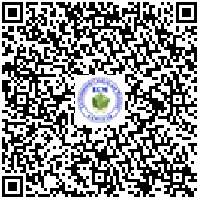Boosting interfacial charge transfer and electricity generation for levofloxacin elimination in a self-driven bio-driven photoelectrocatalytic system
发表时间:2020-02-12
点击次数:
- 论文类型:
- 期刊论文
- 第一作者:
- Zeng, Libin
- 通讯作者:
- Li, XY (reprint author), Dalian Univ Technol, State Key Lab Fine Chem, Key Lab Ind Ecol & Environm Engn MOE, Sch Environm Sci & Technol, Dalian 116024, Peoples R China.; Li, XY; Chen, AC (reprint author), Univ Guelph, Dept Chem, Electrochem Technol Ctr, 50 Stone Rd E, Guelph, ON N1G 2W1, Canada.
- 合写作者:
- Li, Xinyong,Zhao, Qidong,Fan, Shiying,Zhang, Mingmei,Yin, Zhifan,Chen, Aicheng
- 发表时间:
- 2019-12-07
- 发表刊物:
- NANOSCALE
- 收录刊物:
- PubMed、EI、SCIE
- 文献类型:
- J
- 卷号:
- 11
- 期号:
- 45
- 页面范围:
- 22042-22053
- ISSN号:
- 2040-3364
- 摘要:
- Recently, molybdenum disulfide (MoS2) has stimulated significant research interest as a promising electrode candidate in solar cells and energy conservation fields. Unfortunately, the short lower electron/hole migration lifetimes and easy agglomeration hamper its wide practical applications to some extent. Herein, interface engineering coupled with a bio-assisted photoelectrochemical (PEC) strategy is presented to construct a 0D MoS2 quantum dot (QD)/1D TiO2 nanotube electrode for pollutant elimination. Aimed at accelerating charge transfer over the 0D/1D composite interface, three types of coupling PEC models were developed to optimize the catalytic performance. The single chamber microbial fuel cell (SCMFC)-PEC integrated system was found to be the best alternative for levofloxacin (LEV) elimination (0.029 min(-1)), and the sequential SCMFC-PEC further realized the whole system self-running independently. In addition, the interfacial electron migration and LEV degradation pathways were thoroughly investigated by LC/TOF/MS coupled with density functional theory (DFT) calculations to clearly elucidate the electron transfer paths, LEV-attacked sites and mineralization pathways in a joint sequential SCMFC-PEC system. As such, the constructed self-recycling system provides a new platform for bio-photo-electrochemical utilization, which could exhibit promising potential in environmental purification.
- 是否译文:
- 否
- 上一条:Identification of Catalytic Active Sites in Nitrogen-Doped Carbon for Electrocatalytic Dechlorination of 1,2-Dichloroethane
- 下一条:Visible-light-driven sonophotocatalysis and peroxymonosulfate activation over 3D urchin-like MoS2/C nanoparticles for accelerating levofloxacin elimination: Optimization and kinetic study



